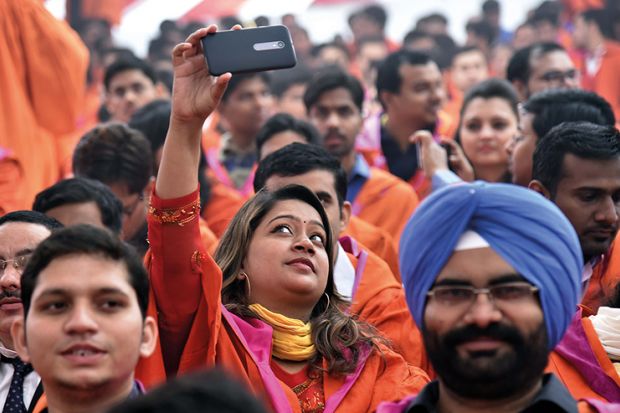Under India’s ambitious overhaul of higher education, the country aims to internationalise universities, taking advantage of strong domestic offerings. But its elite institutions continue to struggle to attract many overseas students to their Indian campuses, academics say.
At the Indian Institutes of Technology (IITs) – arguably the country’s most prestigious universities and its best known higher education brand abroad – international students make up just a fraction of overall learners.
Recent years have seen IITs pay attention. In 2019, heads of IITs met to tackle the issue, noting that the low numbers of foreign students were negatively affecting their institutions’ global rankings. Since then, many institutions have lowered their fees for international students, opened scholarships to ease fee barriers and introduced goals to increase their numbers. But such efforts appear to have helped only marginally, if at all.
Sanjeev Sanghi, former dean of international programming at the Indian Institute of Technology Delhi (IIT-Delhi), conceded that IITs have failed to significantly increase their share of overseas learners – in part due to a reluctance to change their admissions requirements.
“Currently, we have 113 foreign nationals in master’s and PhD programmes in IIT-Delhi out of about 10,000 students total. So it’s still a very low number, but we do not want to make any relaxation on entrance criteria,” said Professor Sanghi.
The figure is slightly lower than in 2019, when IIT-Delhi set a target of 500 international students by 2025.
Among undergraduates, the picture is no better, with the proportion of foreign students dipping even lower. Professor Sanghi estimated that of an undergraduate class of 1,200, international students numbered in the single digits.
“At undergraduate level, that’s where I think a lot of universities are trying to get students – but for IITs it’s almost non-existent and that’s because of our system,” he said.
To enter one of India’s 23 IITs, applicants must pass a rigorous entrance exam set up by these institutions. In India, many students prepare for years, often receiving tailored tutoring, a fact illustrated by the country’s massive home-grown coaching industry.
“We are very particular [at IIT-Delhi] that anyone who enters the undergraduate programme has to clear our entrance exam – we’re not saying that international students are not smart enough, but the entrance examination is a very tough competition,” Professor Sanghi said.
Years ago, the IITs created the Direct Admission for Students Abroad programme to take in international students based solely on their high school grades. But it was limited in scope, and once admitted, students often struggled, continued Professor Sanghi.
“We used to have get some international students based on their high school grades…but those students could not cope with our academic programme. While they were among best of their countries, once they came here, they were not able to do well – so that was one of the reasons why we discontinued that programme,” he said.
Anant Sudarshan, an IIT alumnus and current South Asia director of the University of Chicago’s Energy Policy Institute, agreed the institutions have “traditionally struggled to integrate international students into a curriculum that is designed around a very challenging entrance examination”.
“This is, of course, in addition to cultural assimilation to a new country, although that is a common problem for all Indian universities,” he added.
For now, at least, those barriers look unlikely to change much. Without the willingness to change their means of entry, the prospect of IITs’ Indian campuses becoming more international in the future seem slim.
Still, Professor Sanghi defended their approach. “We don’t want to admit international students just to fill up seats,” he said.
Register to continue
Why register?
- Registration is free and only takes a moment
- Once registered, you can read 3 articles a month
- Sign up for our newsletter
Subscribe
Or subscribe for unlimited access to:
- Unlimited access to news, views, insights & reviews
- Digital editions
- Digital access to THE’s university and college rankings analysis
Already registered or a current subscriber? Login








